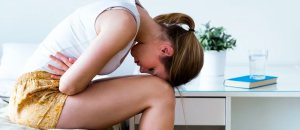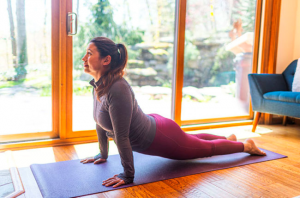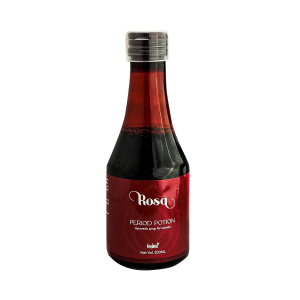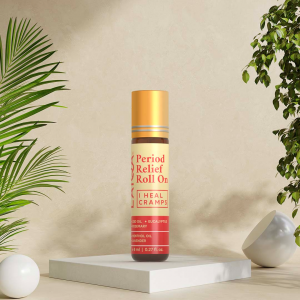Most of us hate that time of the month, don’t we? The bloating, the mood swings, the hormonal roller coaster and worst of all, period cramps or menstrual pain. Menstrual pain can truly be a bane for a lot of our existence. For some of us lucky ones, it is non-existent or quite manageable, but for the ones who aren’t that blesses, it can truly be an extremely uncomfortable and painful experience.
Physically speaking, menstrual cramps can range from mild to severe, and their intensity can vary from woman to woman. They occur as a result of the uterus contracting to shed its lining, leading to a temporary decrease in blood flow and oxygen supply to the surrounding tissues. This lack of oxygen can cause pain and discomfort, sometimes radiating to the lower back and thighs.
But it’s not just the physical pain that can affect a woman. Menstrual cramps can also have a significant emotional and psychological impact. Dealing with intense pain and discomfort for days can be mentally draining and disrupt daily activities. It can lead to irritability, mood swings, and even feelings of sadness or anxiety. These emotional symptoms can further exacerbate the physical pain, creating a challenging cycle to break.
Additionally, menstrual cramps may interfere with a woman’s productivity at work, school, or other commitments. The pain can make it difficult to concentrate and perform at her best. Social and recreational activities may also take a backseat when menstrual cramps strike, as the discomfort can make it challenging to participate fully.
Managing Menstrual pain with Yoga and Exercise
Traditionally a lot of us have been advised to stay away from any kind of physical activity during periods. After all most of us are guilty of playing the periods card multiple times to get away from PT or sports period during school. Now remember it is completely fine to want to take rest and avoid any physical activity during that time of the month and for a lot of women, it becomes practically impossible to carry out any heavy physical activity during that time. But generally, speaking, we have been told to stay away from exercising during periods as it may enhance our pain. But the truth is quite the opposite. Mild exercise including yoga can actually be a great antidote to menstrual pain.
First and foremost, yoga promotes relaxation and stress reduction, which can be incredibly beneficial when dealing with menstrual pain. Stress can intensify pain and discomfort, so finding ways to calm the mind and body can make a world of difference. Engaging in gentle yoga poses and deep breathing exercises can help activate the body’s relaxation response, soothing the nervous system and easing tension in the muscles.
Certain yoga postures specifically target the lower abdomen and pelvis, providing relief to menstrual cramps. Poses like Child’s Pose (Balasana), Reclining Bound Angle Pose (Supta Baddha Konasana), and Supine Twist (Supta Matsyendrasana) gently stretch and release tension in the pelvic area, improving blood flow and reducing pain.
Moreover, practicing yoga increases circulation throughout the body, including the reproductive organs. This improved blood flow can help alleviate menstrual pain and promote a healthier menstrual cycle overall. Regular yoga practice can also strengthen the core muscles and improve posture, which can provide long-term benefits in managing menstrual pain.
Another fantastic aspect of yoga is its focus on mindfulness and body awareness. By paying attention to your body’s sensations and breathing deeply into each pose, you develop a stronger connection with yourself. This heightened awareness can help you better understand your body’s needs and respond to them appropriately during your menstrual cycle.
It’s worth mentioning that not all yoga practices are created equal when it comes to menstrual pain. It’s generally recommended to avoid intense or strenuous yoga styles during your period. Instead, opt for gentle, restorative, or yin yoga practices that prioritize relaxation and comfort.
Apart from yoga, mild exercises like walking, light jogging, and stretches can also do wonders in easing your menstrual pain. However, Remember, every woman’s experience with menstrual pain is unique, so it’s essential to listen to your body and adjust your yoga or exercise practice accordingly. But generally speaking, incorporating yoga and exercise into your menstrual routine can be a game-changer. So roll out that mat, put on your running shoes find a peaceful space, and let the soothing power of exercise work its magic on your menstrual pain. Your body and mind will thank you
Managing Menstrual Pain with Diet
A nutrient-rich diet can also be a great way to deal with menstrual pain. Incorporating plenty of fruits, vegetables, whole grains, and lean proteins into your diet is a great starting point. These foods are packed with vitamins, minerals, and antioxidants that support overall health and may help alleviate menstrual pain.
Omega-3 fatty acids, found in fatty fish like salmon, as well as chia seeds, flaxseeds, and walnuts, have been shown to have anti-inflammatory properties. Including these foods in your diet can potentially reduce inflammation and help ease cramps. So go ahead and whip up a delicious salmon dish or sprinkle some chia seeds on your yoghurt or smoothie.
Magnesium is another nutrient that can be beneficial for menstrual pain. It helps relax muscles and may help reduce the intensity of cramps. You can find magnesium in foods like leafy greens, nuts, seeds, and legumes. So load up on spinach, almonds, pumpkin seeds, and lentils to give your body a magnesium boost.
On the flip side, it’s a good idea to steer clear of foods that can exacerbate inflammation and increase discomfort during your period. Processed foods, sugary treats, and foods high in saturated fats can contribute to inflammation and make your cramps feel worse. So while that greasy pizza or sugary chocolate might be tempting, it’s best to indulge in moderation or choose healthier alternatives.
Lastly, staying hydrated is crucial during your period. Drinking enough water can help reduce bloating and water retention, which are common symptoms that often accompany menstrual pain. So make sure you’re sipping on water throughout the day and consider incorporating herbal teas or infused water for a little extra flavour and hydration.
Remember, everyone’s body is different, so it’s important to pay attention to how certain foods make you feel during your period. Keeping a food diary can help you identify any patterns between your diet and the severity of your menstrual pain. If you notice that certain foods worsen your symptoms, you can adjust your diet accordingly.
By nourishing your body with nutrient-rich foods, avoiding inflammatory choices, and staying hydrated, you’re giving yourself the best chance at managing menstrual pain through your diet. So go ahead and create a delicious, period-friendly meal plan that keeps those cramps at bay. Your taste buds and your body will thank you!
Bonus: Rosa Period Potion and Period Cramp Relief Roll On
Exercise and diet are great ways to manage your period cramps, but sometimes, you need that extra push to deal with that menace.
Rosa Period Potion
A healthy uterine ecosystem is directly proportional to a healthy state of mind. That is why we bring to you Rosa Period Potion, in mixed fruit flavour, which has the goodness of traditional ayurvedic herbs and minerals. When combined together, these herbs work in synergy to maintain a healthy uterine ecosystem whilst reducing bloating and easing premenstrual aches as well. This formulation also helps in relieving anxiety.
Period Cramp Relief Roll-on
Laiqa period cramp relief roll-on is a super effective blend of 5 pure essential oils that create a magical potion to give you instant relief from period cramps. Just apply to the affected area and experience what it says- “I heal cramps.
We understand that period pain can be truly a terrible experience but with proper diet and exercise, we can overcome that too








